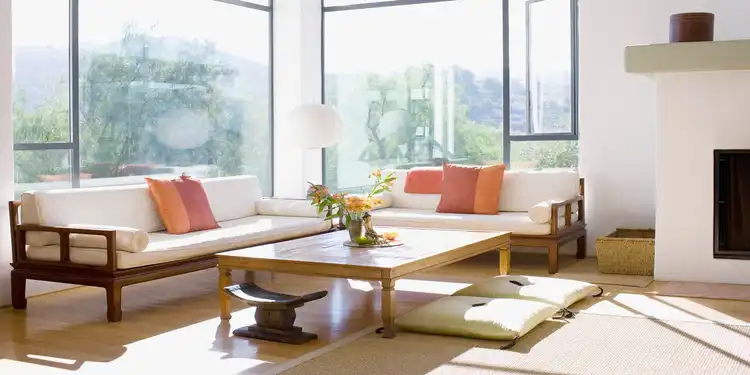Japandi Interior Design- The Hygge and Wabi-Sabi Fusion
Japandi is a new interior design style that is catching on real fast and is likely to stay with us for a while. Interior design in the Japandi style combines the finest of Japanese and Scandinavian styles. Clean lines, simplicity, and a concentration on natural materials characterize it. As a result, the look is modern and minimalist.
Spaces in the Japanese design are warm and inviting, with a focus on comfort and functionality. Because it gives a sense of openness and airiness, this form of interior design is also ideal for small spaces. If you’re looking for a unique and different take on a simple, beautiful aesthetic for your house, the Japandi interior design style is for you.
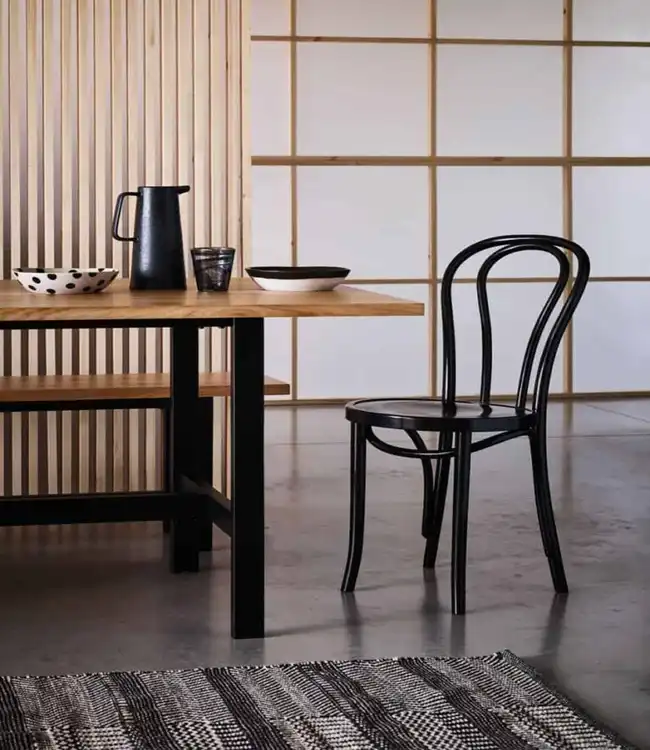
What are the elements of Japandi Interior Design?
Let’s jump on to some of the key features of Japandi interior design style.
1. Simplicity and clean lines in Japandi interior design
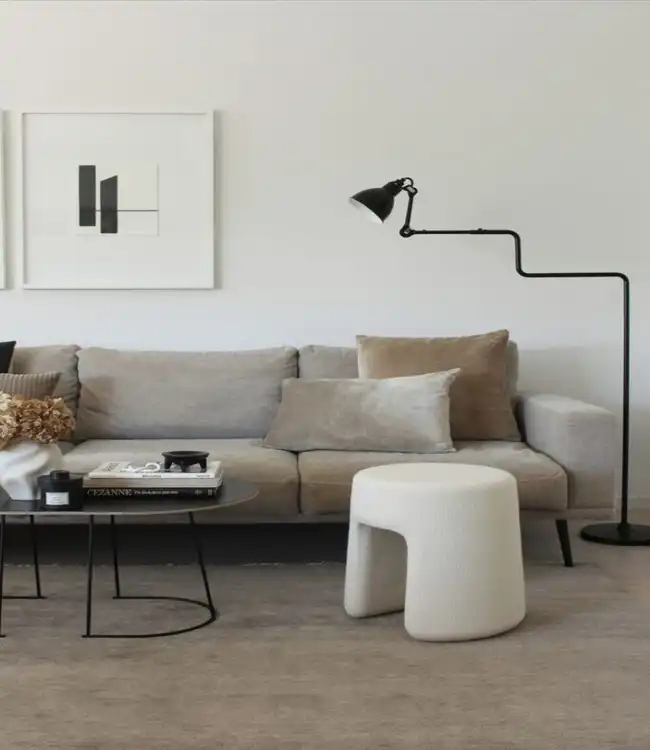
This look is influenced by Japanese design, which is noted for its minimalist approach. With little decorations or flourishes, furniture and decor are often clean and streamlined. Rather than adornment, the emphasis is on functionality and simplicity.
To complete the Japandi interior design style, consider incorporating Japandi furniture to your space. This gives the impression of openness and airiness.
2. Japandi interior design is about natural materials
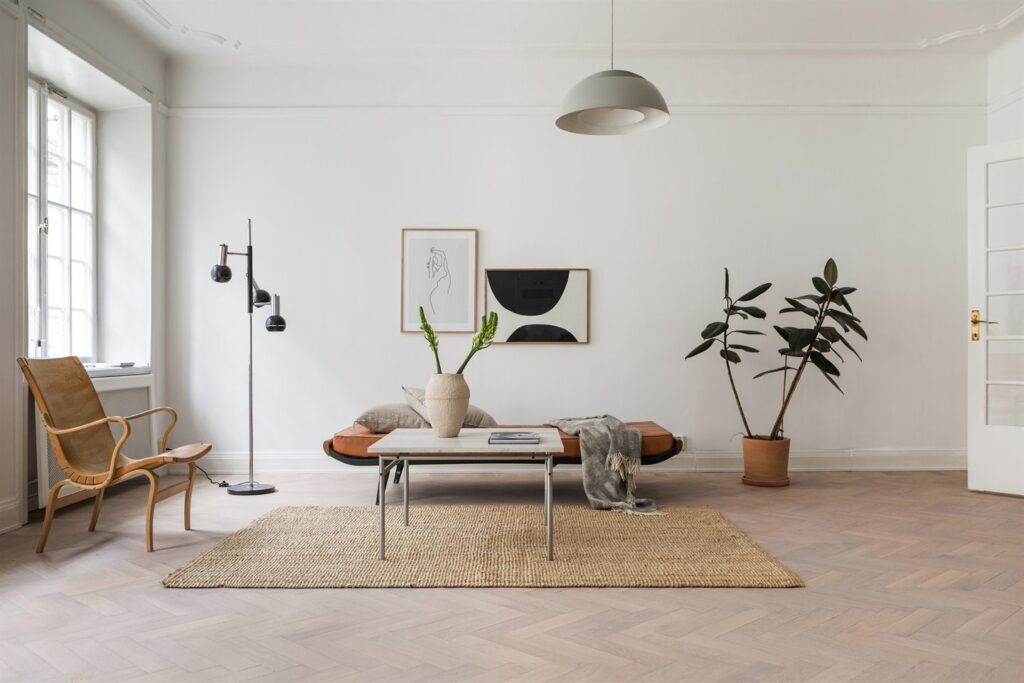
Japanese style is known for accepting flaws and beauty while creating minimal waste and harm to the environment. This necessitates the use of a large number of organic materials in their purest form. Wherever possible, natural materials are used in the Japandi style. Wood, stone, and metal are examples of this. These materials are frequently used in their natural state, with very little to no treatments or finishes applied. This results in a simple and attractive minimalist and authentic aesthetic.
3. Functionality over decoration is the hallmark of Japandi interior design style
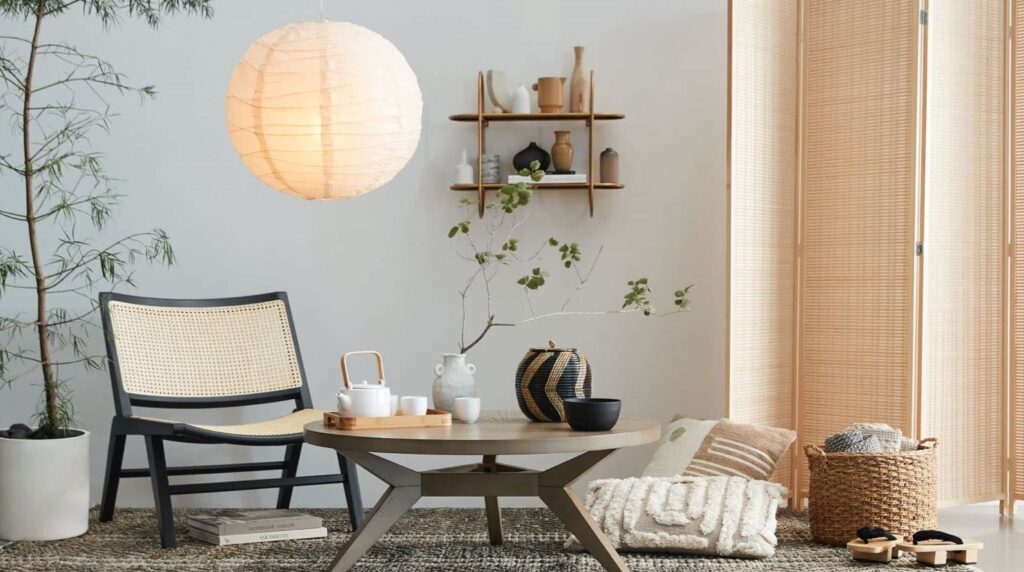
The Japanese style is very deliberate and utilitarian. Rather than decorating for show, the emphasis is on creating an environment that is comfortable and inviting. This implies that furniture and furnishings are frequently plain and minimalistic, with no extra decorations. This isn’t to say that Japandi is devoid of accessories; rather, it is to say that the accessories are both functional and skilfully picked.
4. Simple, geometric and abstract shapes create cohesive aesthetic
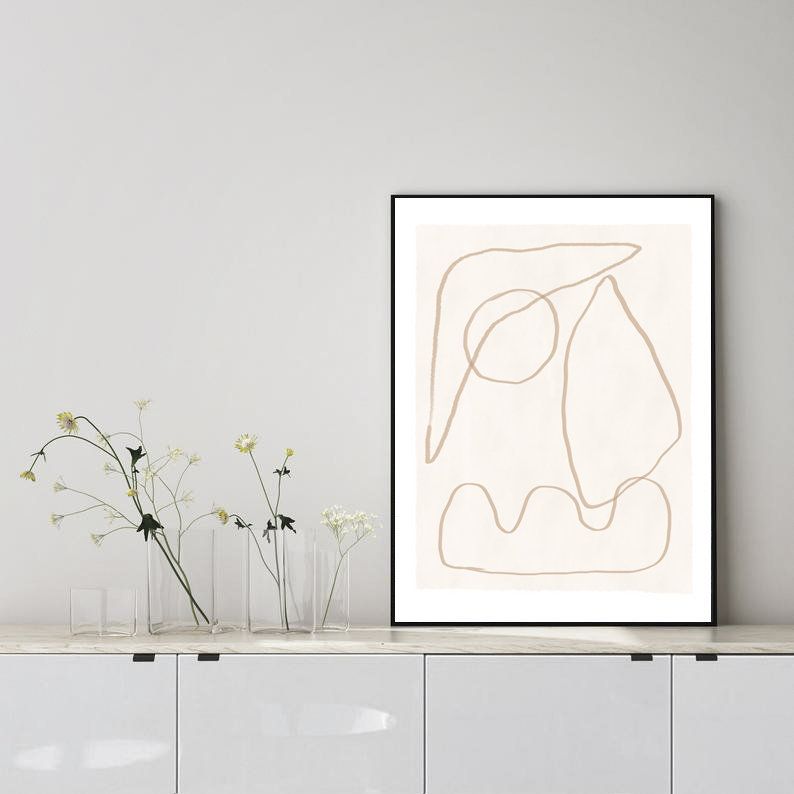
It’s crucial to use simple, geometric and abstract elements to achieve a coherent Japandi aesthetic. This contains shapes like squares, rectangles, triangles and sculptural forms. To create a cohesive aesthetic, employ these shapes in main furniture and most of the accessories.
5. Neutral and subdued color palette in Japandi interior design style
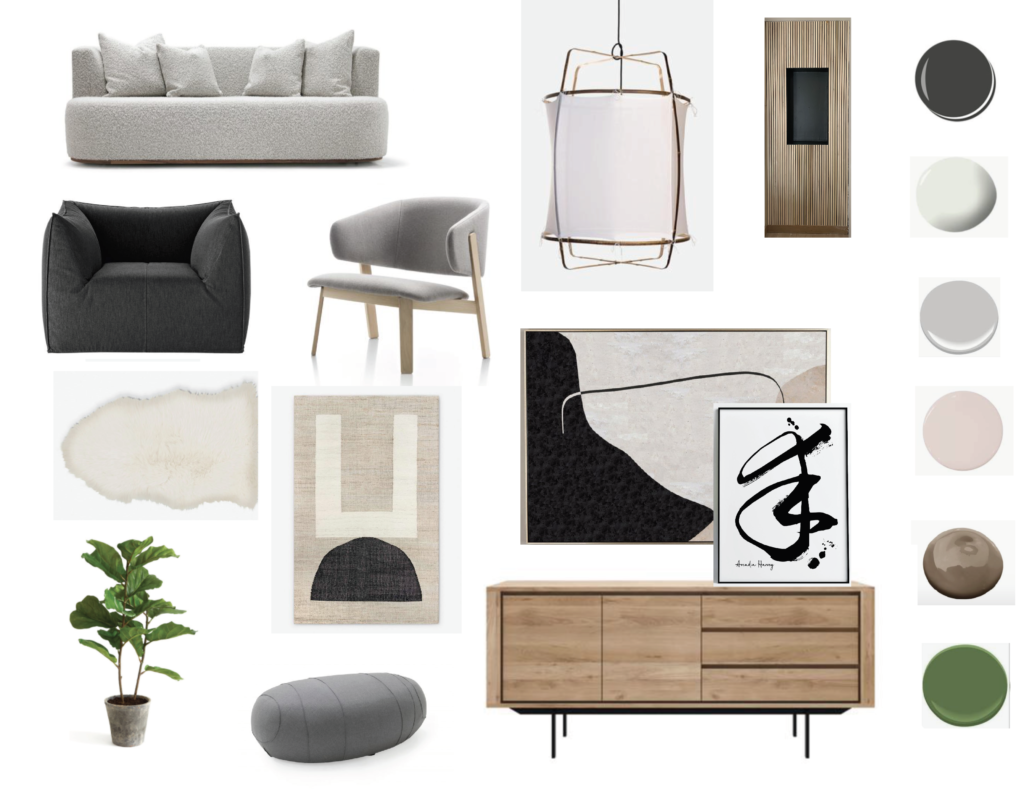
The color palette in a Japandi style living room should be neutral and understated. It sticks to light colors like beige, cream, white, and gray to achieve this. Accessories and artwork can offer a splash of color, but the overall appearance should be muted and subtle. Bright or bold colors are avoided because the idea is to create a peaceful and pleasant ambiance.
6. Plants and flowers for a touch of natural beauty
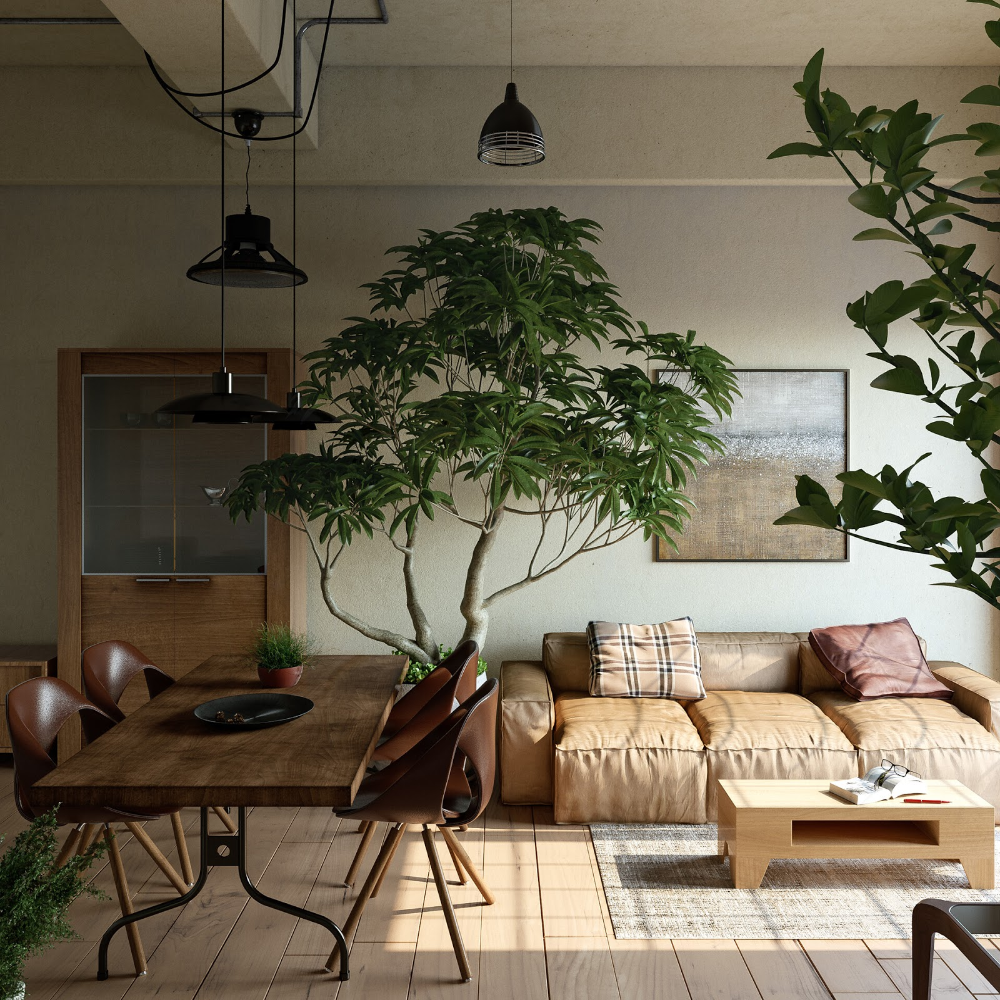
Adding plants and flowers to your Japandi style living room is a terrific way to bring a touch of natural beauty and freshness. Plants and flowers can liven up a room and give a splash of color. They also contribute to a feeling of relaxation and well-being.
7. Living quality and craftsmanship
Japandi prioritizes functionality before ornamentation. As a result, it looks for high-quality things with flawless finishes. These things are not meant to be thrown away after a few months/years of use, but rather to last a long time.
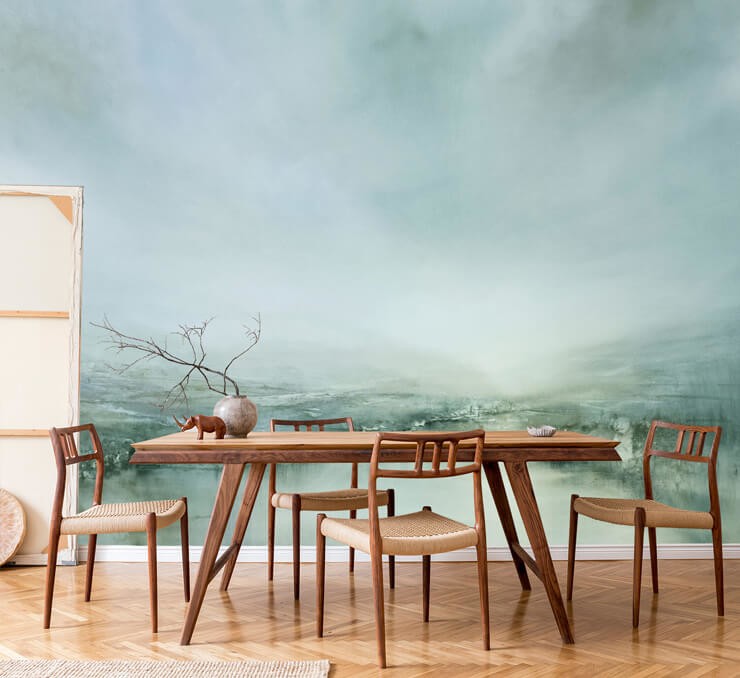
Conclusion
Interior design in the Japandi style is a unique and beautiful approach to adorn your home to create a welcoming, elegant, and fully practical space. Japandi may be the appropriate style for you if you’re seeking for something unique and trendy right now. Don’t hesitate to give it a shot; you won’t be disappointed!

